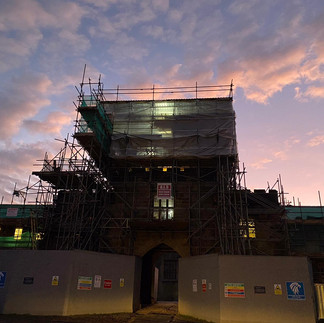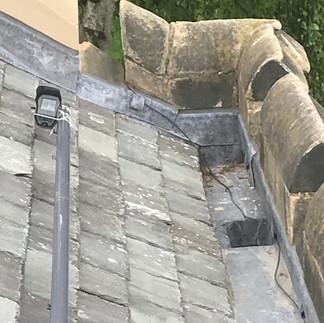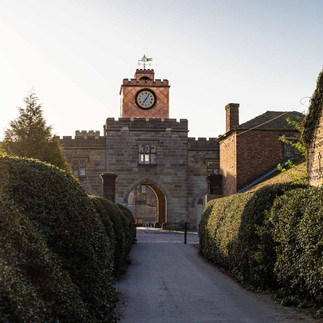Restoration of an Historic Building - Commendation (2 of 2) - Elvaston Coach House & Clock Tower
- Admin

- Dec 12, 2021
- 2 min read
Elvaston Coach House and Clock Tower prior to restoration.
Comprehensive repairs were undertaken to the Grade II listed Coach House and Clock Tower at Elvaston Castle with a contract value of circa £850,000. The need for the repairs arose from the poor and worsening condition of the original clock tower structure and Westmoreland roofs over the adjacent historic coach house ranges.
Listed building consent was also provided for some alterations to the building fabric to improve options for the future regeneration of the building in alignment with the current Elvaston Castle Masterplan.
General like-for-like repairs were undertaken to the building wherever possible involving the careful coordination of many skilled craftspeople. This work involved masonry repairs, carpentry repairs, re-pointing and the refurbishment of all windows and doors. The project also involved reinstating a number of traditional building materials, replacing inappropriate substitutions that were made during the 1970’s. Examples of this include stripping off all bituminous roofing materials and replacing it with traditional sand-cast leadwork to all roof areas, and reintroducing traditional lime plasters or renders where appropriate.
All this hard work is easy to be overshone, quite literally, by the work undertaken to the clock tower. After much deliberation, a decision was made to replace the original structure with a structure that was more fit for purpose. This was because the old structure was riddled with problems, including asbestos containing materials which had to be safely removed. The new clock tower was designed much in the spirit of the original clock tower, featuring a new timber framed structure, and matching overall external appearance.
An opportunity was identified in the replacement of the clock tower in which historic research led to the reinstatement of some its lost architectural details. However, the most striking change, as part of the overall conservation philosophy, was to clad the structure entirely in unpaginated copper. This is a clear and ‘honest’ departure from the earlier cementitious render, which included asbestos containing materials. The new copper cladding was selected as it should provide a much more durable raincoat than its previous incarnation with very little or no maintenance required.
Smith of Derby were also involved in refurbishing the clock mechanism which had been out of action for many years. Their work also included installing an automated winding and timing mechanism to ensure good time is kept. Smith also designed and installed a new weathervane and reinstated the original bell from its resting place in the museum. The bell and now chimes hourly.
Prior to the repairs being undertaken careful archaeological examination of the clock tower revealed the existence of the remains of an earlier ‘pyramid’ shaped roof structure. An early design decision was made to conserve the remains, rather than removing them, to allow future interpretation of the building’s history. Consequently, the new clock tower structure has been built above the level of the old roof structure.
After restoration.




















































